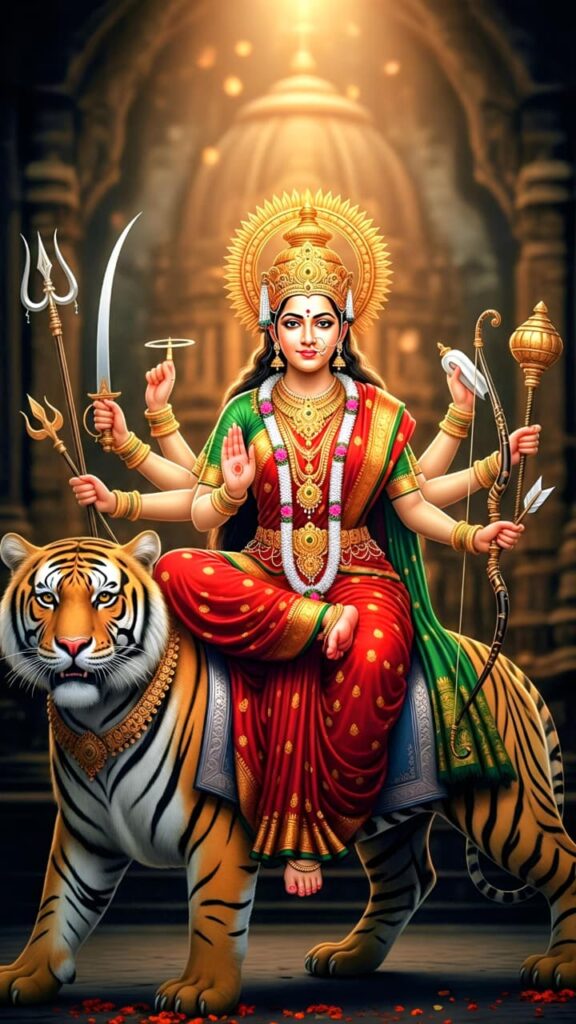
श्री दुर्गा स्तोत्रम् (देवी स्तुती)
सर्वमङ्गलमाङ्गल्ये शिवे सर्वार्थसाधिके।
शरण्ये त्र्यम्बके गौरी नारायणी नमोऽस्तु ते॥
या देवी सर्वभूतेषु शक्तिरूपेण संस्थिता।
नमस्तस्यै नमस्तस्यै नमस्तस्यै नमो नमः॥
या देवी सर्वभूतेषु बुद्धिरूपेण संस्थिता।
नमस्तस्यै नमस्तस्यै नमस्तस्यै नमो नमः॥
या देवी सर्वभूतेषु लक्ष्मीरूपेण संस्थिता।
नमस्तस्यै नमस्तस्यै नमस्तस्यै नमो नमः॥
या देवी सर्वभूतेषु मातृरूपेण संस्थिता।
नमस्तस्यै नमस्तस्यै नमस्तस्यै नमो नमः॥
Navratri is one of the most important and widely celebrated Hindu festivals in India. The word Navratri comes from Sanskrit, where Nav means “nine” and Ratri means “nights.” It is a nine-night festival dedicated to Goddess Durga and her nine divine forms, known as Navadurga. The festival symbolizes the victory of good over evil, light over darkness, and knowledge over ignorance.
Duration and Time
Navratri is celebrated twice a year:
Chaitra Navratri (March–April, during spring)
Sharad Navratri (September–October, during autumn, most popular)
Sharad Navratri ends with Dussehra (Vijayadashami), which marks the victory of Lord Rama over Ravana and Goddess Durga over Mahishasura.
Significance
Navratri celebrates the divine feminine energy (Shakti).
Each of the nine days is dedicated to one form of Goddess Durga:
- Shailputri – Daughter of the Himalayas
- Brahmacharini – Symbol of penance and devotion
- Chandraghanta – Goddess of bravery and strength
- Kushmanda – Creator of the universe
- Skandamata – Mother of Kartikeya (Skanda)
- Katyayani – Fierce warrior goddess
- Kalaratri – Destroyer of evil forces
- Mahagauri – Goddess of purity and serenity
- Siddhidatri – Goddess who grants wisdom and success
Rituals and Traditions
Ghatasthapana (Kalash Sthapana): On the first day, devotees establish a sacred pot symbolizing prosperity.
Fasting: Many people observe fasts for nine days, eating only satvik (pure) food.
Garba & Dandiya: In Gujarat and Maharashtra, people perform traditional dances at night.
Durga Puja: In West Bengal, Bihar, and Assam, the last five days are celebrated grandly with huge Durga idols, pandals, and cultural events.
Kanya Pujan: On the 8th or 9th day, young girls (seen as forms of the goddess) are worshipped and offered food and gifts.
Cultural Importance
Navratri brings communities together through music, dance, and devotion.
It highlights the power of women, respect for nature, and moral values.
Farmers also see it as a time to thank the goddess for a good harvest.
In short, Navratri is not only a festival of worship but also of joy, discipline, and celebration of divine energy in every form of life.
